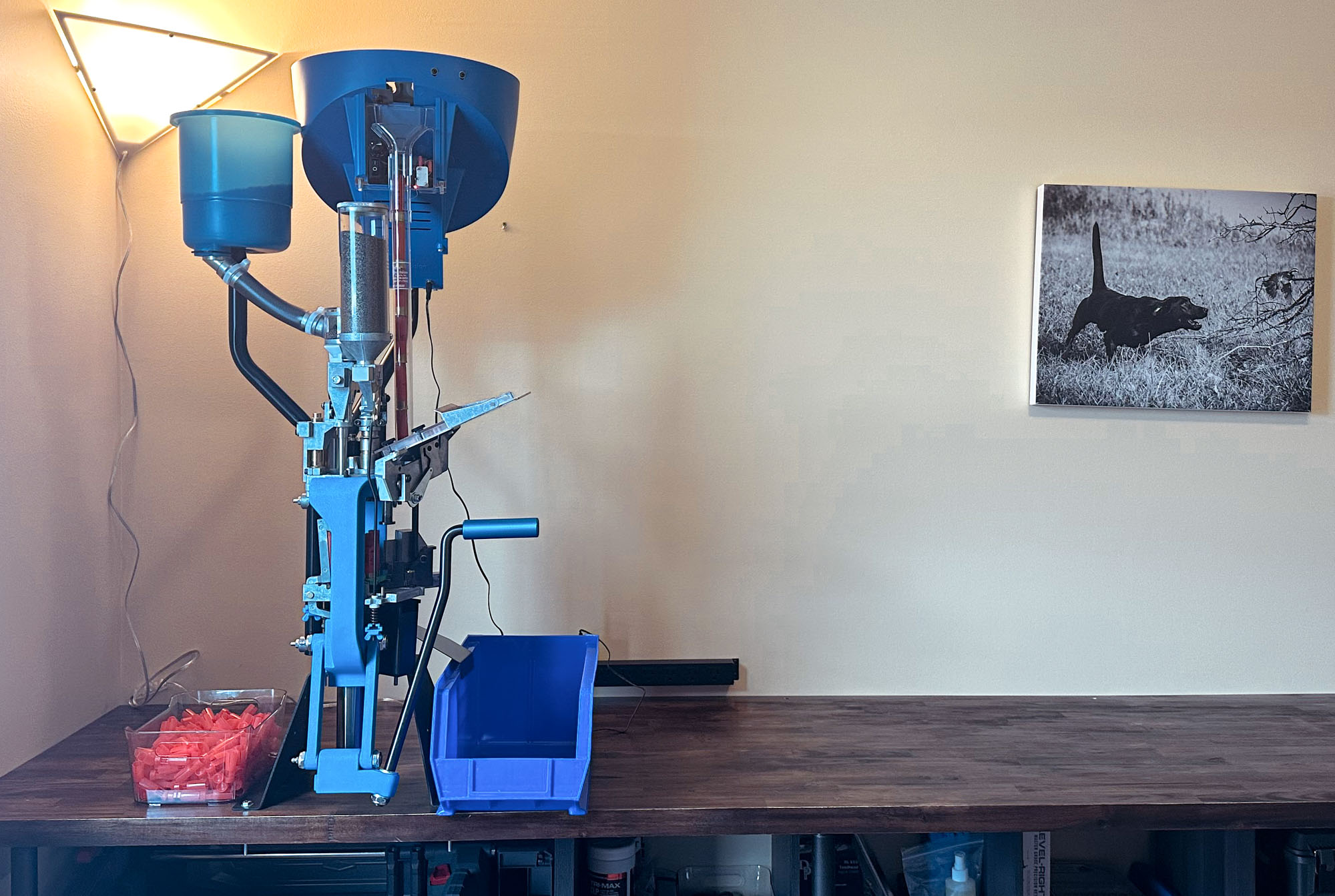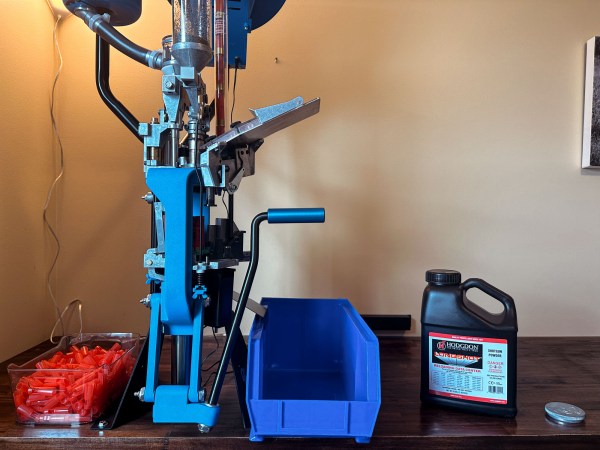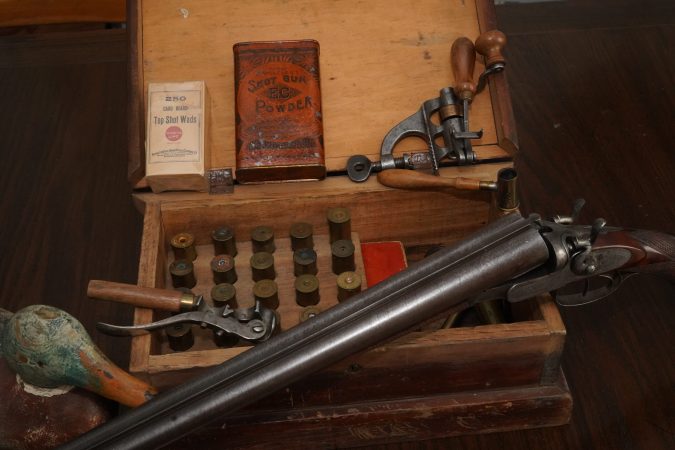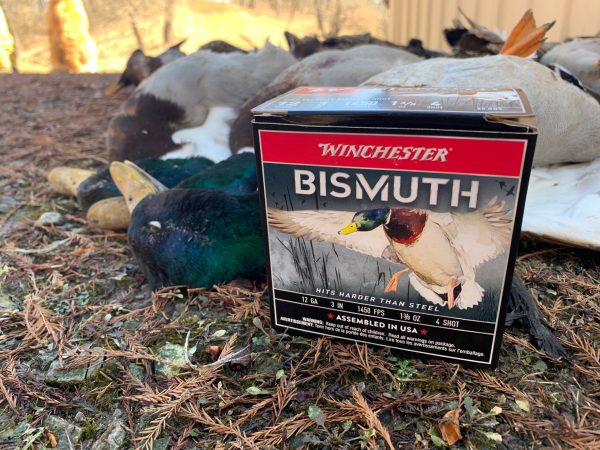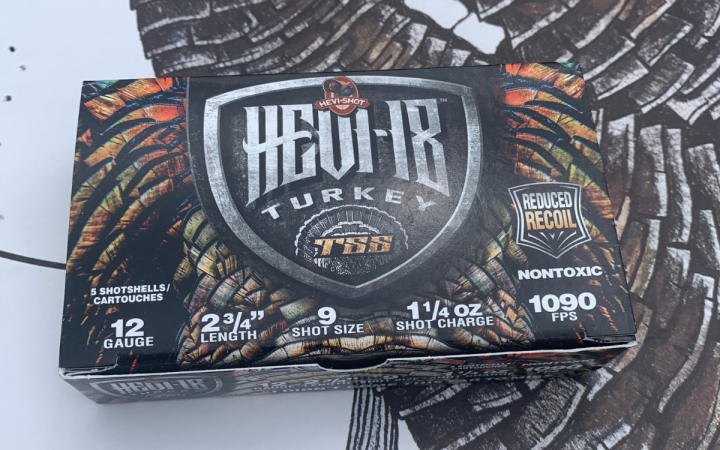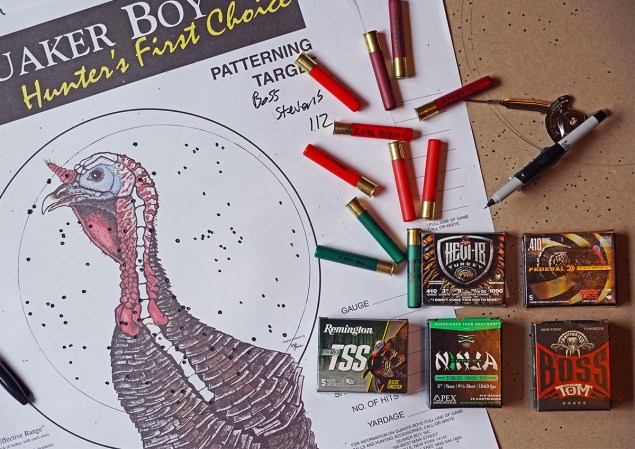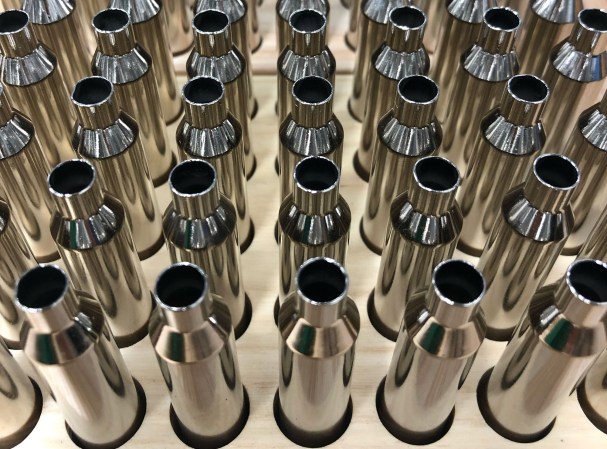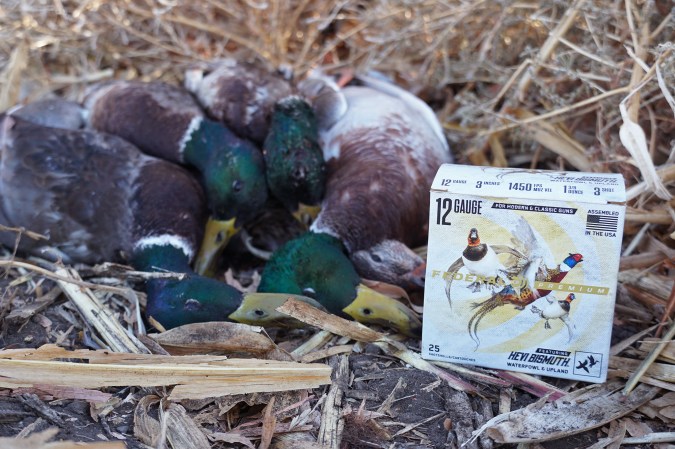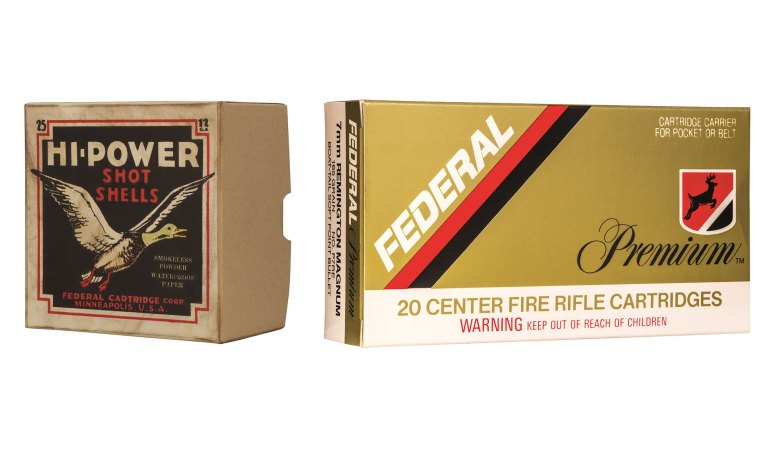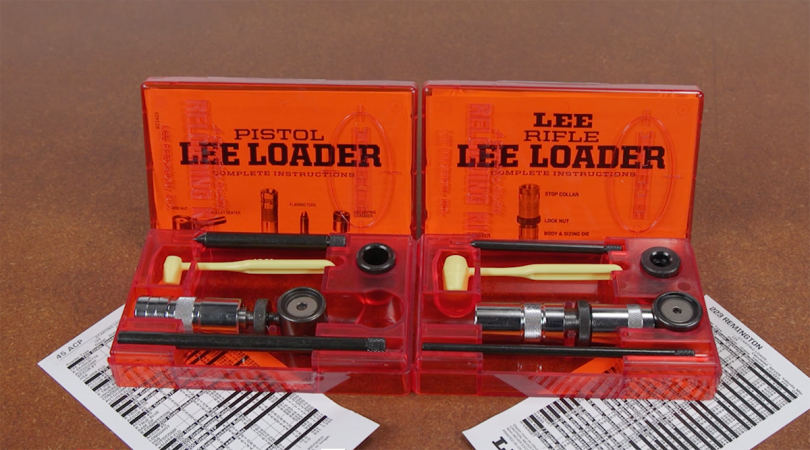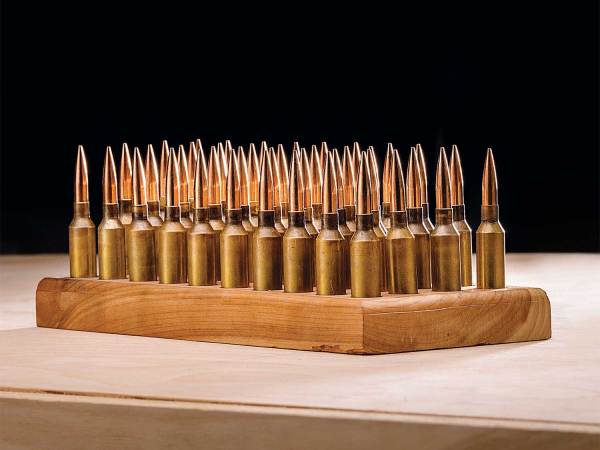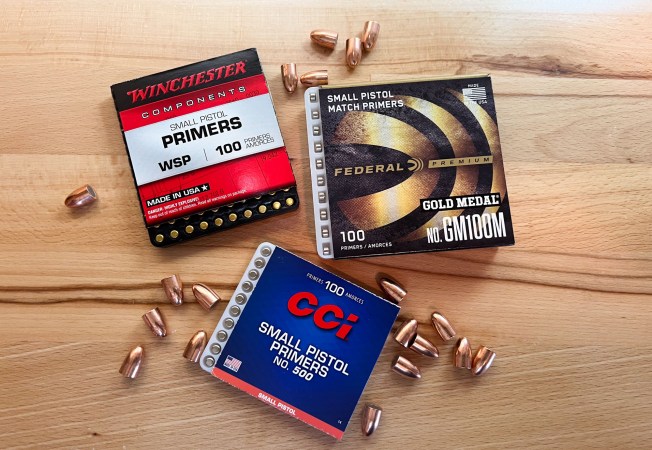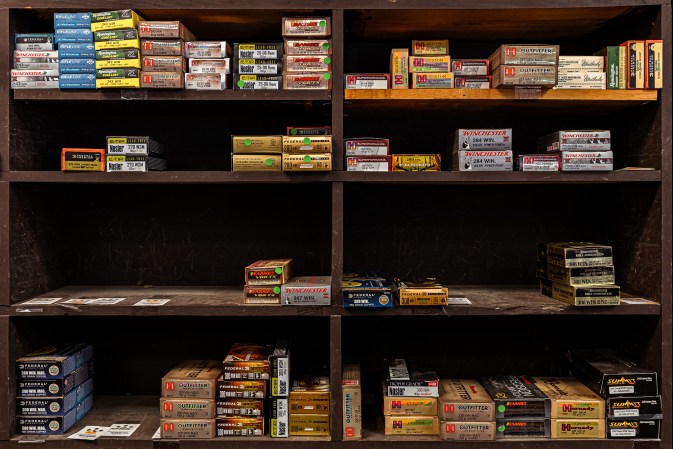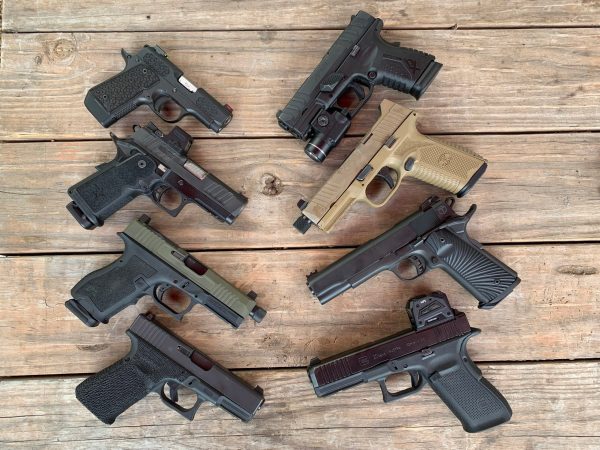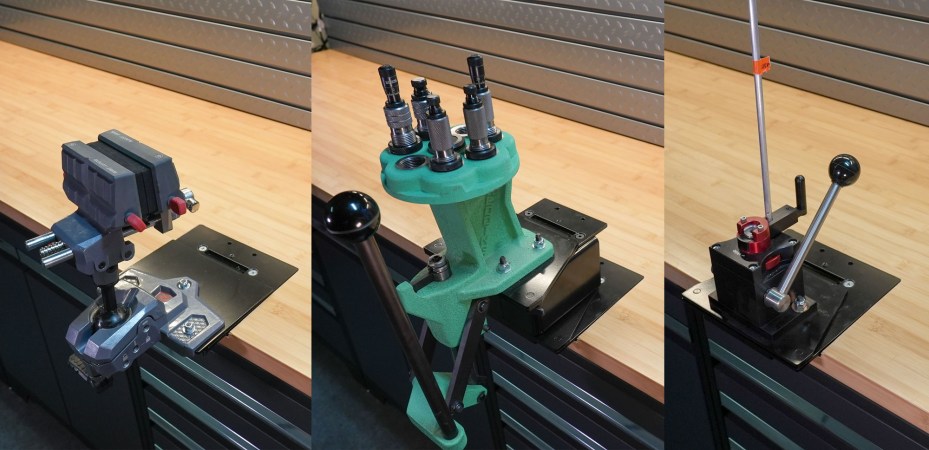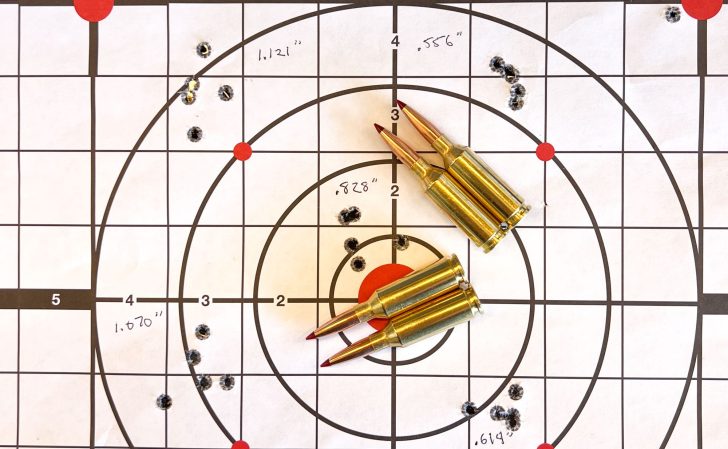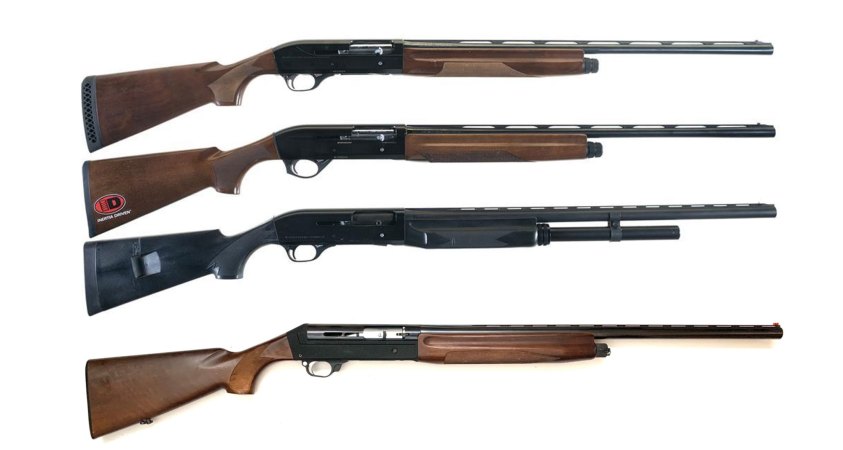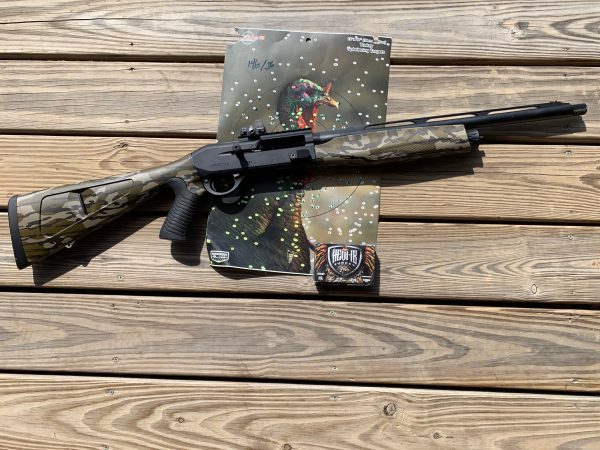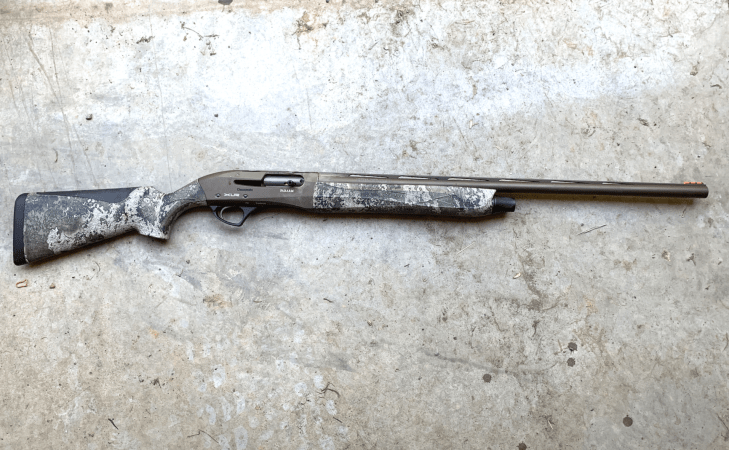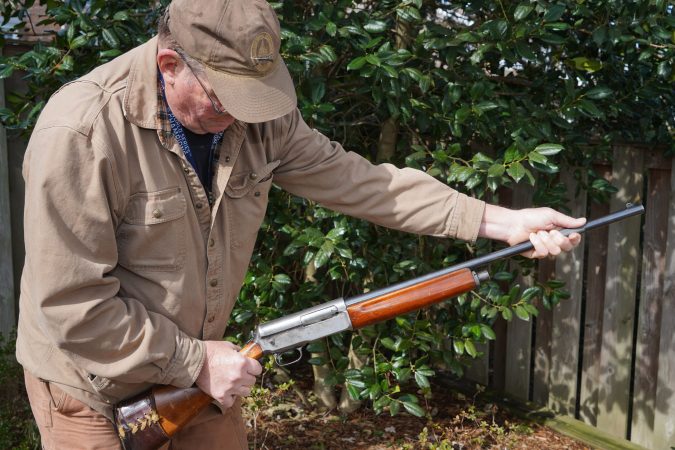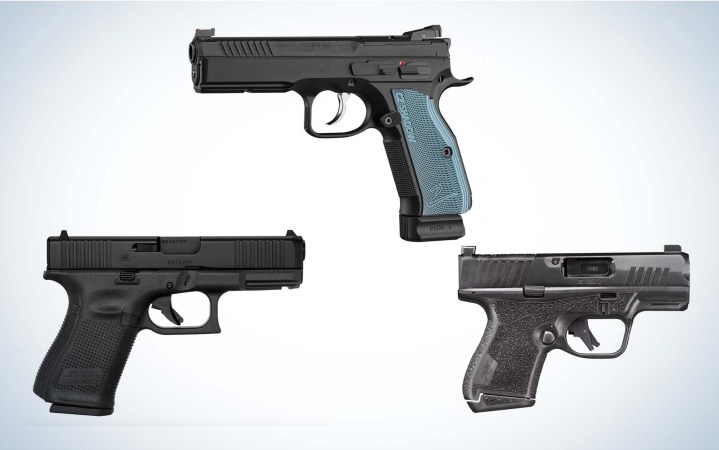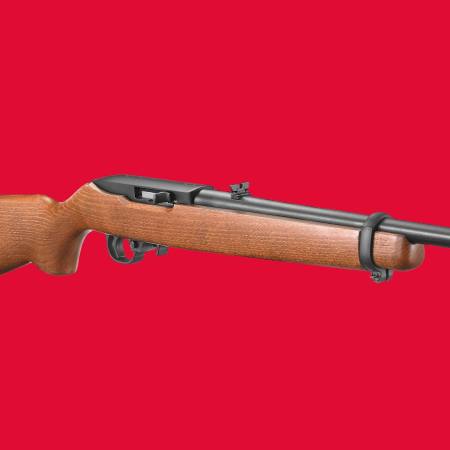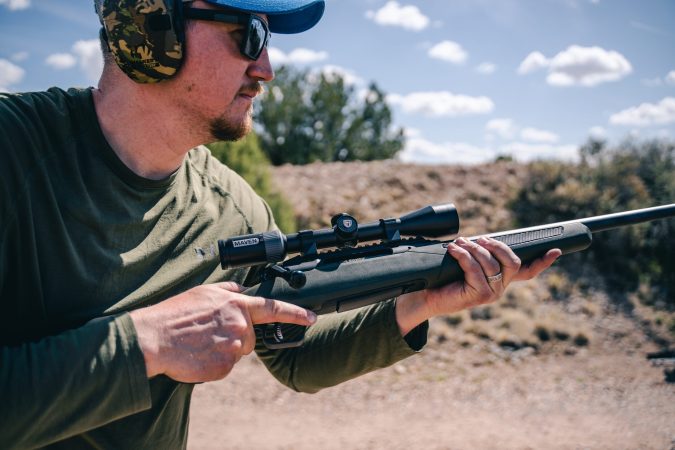We may earn revenue from the products available on this page and participate in affiliate programs. Learn More ›
Dillon Precision, while a household name in metallic reloading, is not as well known in the shotshell realm. But the Dillon SL900 is as fully capable as the other machines in their lineup, and is gaining greater awareness in the shotgun community.
Like shooting a shotgun, reloading shotshells involves a lot of moving parts working in concert to achieve a desired outcome. The Dillon SL900 is a five-station progressive press that does everything necessary to complete a fresh shell with each pull of the handle.
Dillon SL900
Dillon SL900 Specs
- Available as a 12-, 20- or 28-gauge loader
- Loads up to 2 ¾-inch shells
- Loads No. 6 to No. 9 size shot
- Automatic indexing
- Automatic powder charging and priming
- Adjustable case-activated shot dispensing system
- Tilt-out wad guide
- Aluminum roller handle
- Case-activated powder system
- Heavy duty O-frame design
- Optional case feeder available
- Interchangeable tool head design
- Price: From $1,675
Dillon SL900 Initial Setup
The SL900 is user-friendly to get from box to bench, thanks to Dillon’s step-by-step instructions. Even for those among us with less than solid mechanical skills (that would be me), it is a relatively painless process.
Mounting the Dillon SL900 to the Bench
The Dillon SL900 comes with a base called the Strong Mount that is bolted to the loader and then affixed to the bench or surface. A few things to note about this process:
- Make sure you have a deep well socket of the appropriate size to tighten the ¼ – 20 hex bolts.
- Using the Strong Mount, raises the loader by several inches. For most, this detail may be immaterial. For my five foot stature, I actually constructed my bench around a comfortable user interface height. In lieu of a standard 36-inch counter, I built my bench with a 32-inch surface height. This allowed me to use the mount and be at a comfortable physical and visual level in relationship to the loader.
- If you are looking to quickly swap out loaders, you can use T-nuts to facilitate quick and consistent loader location changes.
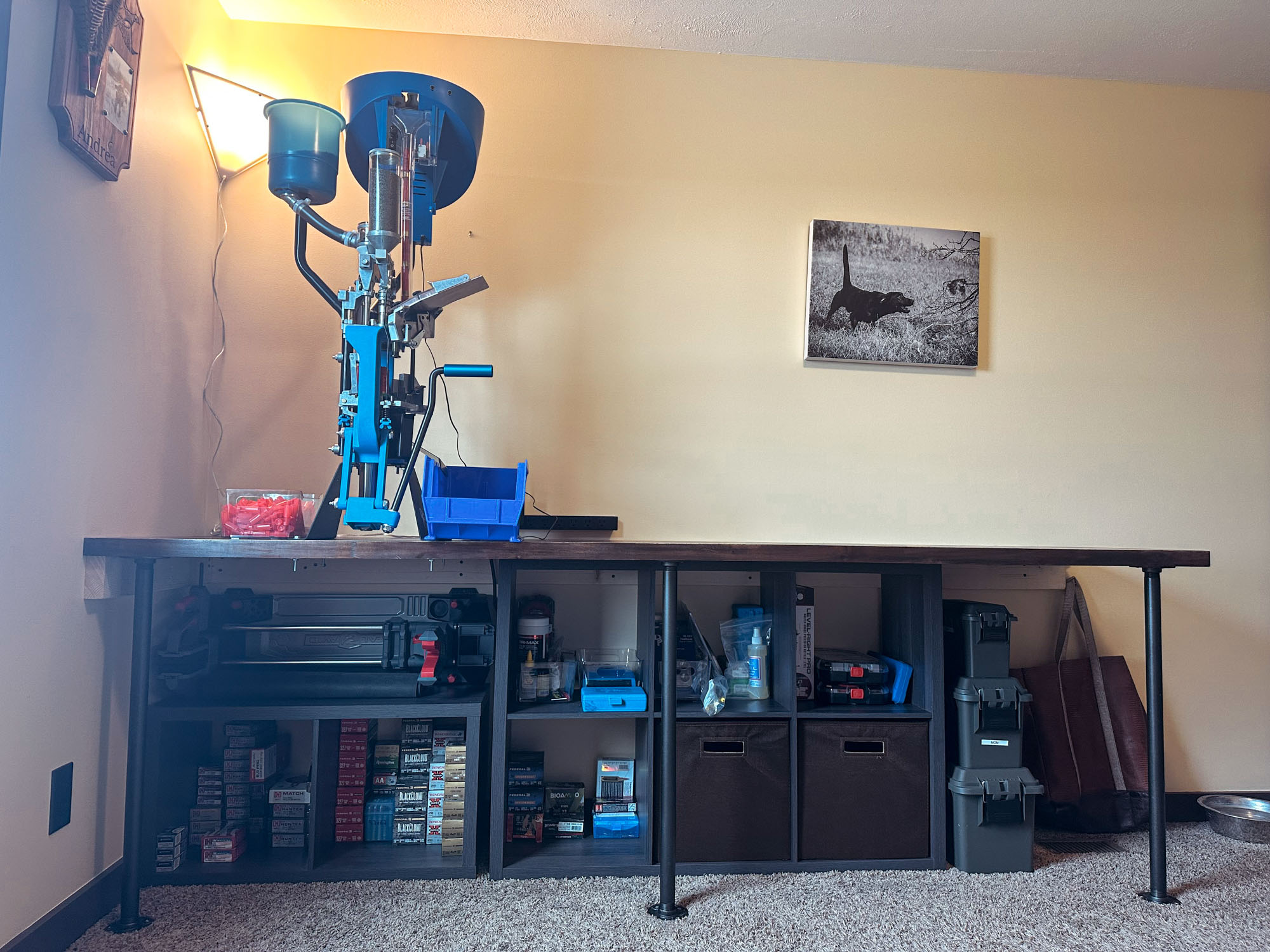
Attaching the Case Feed Post, Shot Post, and Shot Container
The next step is to install the case feed post and the shot post. These are two metal components that are installed vertically on the left side of the loader. They are contoured differently from one another and easy to tell apart. The diagram for assembly is clean and simple. Make sure to follow the order exactly of clamps and washers to allow for proper spacing and alignment.
The shot container is then placed on its post. Unlike many shot shell reloaders, the Dillon SL900 holds an entire 25-pound bag of shot. This is a great benefit when it comes to component tracking and storage—no more partial bags of shot sitting around to get spilled. You also do not need a funnel to fill the shot container. It is designed as a hopper that you just pour the shot into.
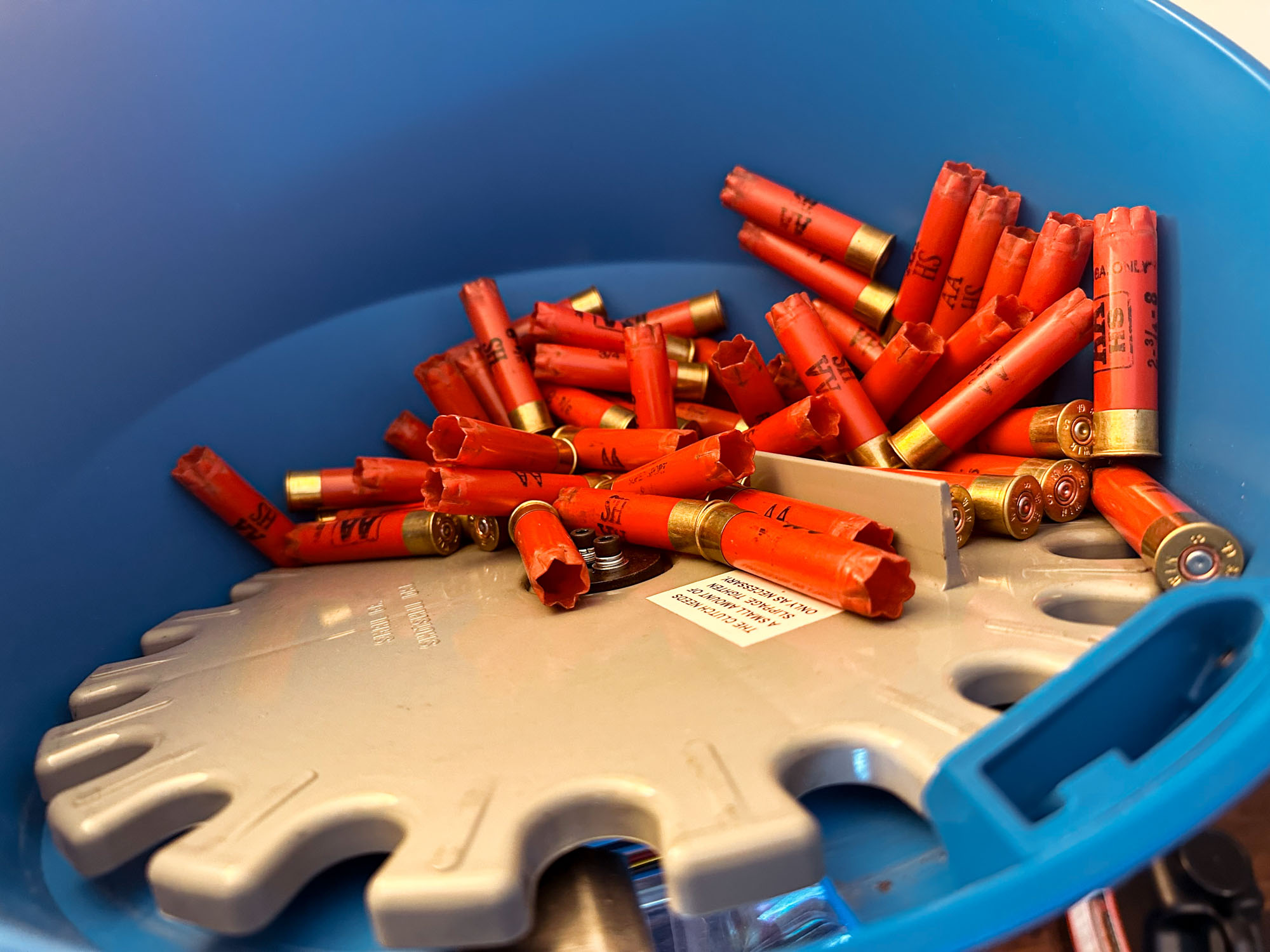
Installing and Operating the Optional Case Feeder
My review unit is equipped with the optional case feeder. Before mounting it to the post, plug it into an outlet near your bench and add approximately 10 empty hulls to the hopper.
Turn on the case feeder using the switch on the front of the unit and manipulate the dial that adjusts the speed of the rotation of the shot shell disc. This will give you a feel for the unit.
If the speed is too fast, hulls will either get stuck or flingged across the room. But you want it to go fast enough so that it can keep up with your reloading.
With the SL900, you can probably set the speed to its lowest setting, which is what I did. It is unlikely you’ll be able to outrun the rate at which it feeds hulls into the tube.
The directions to mount the case feeder are clear and simple. You attach it to its post, and align the clear case feed tube that transfers hulls from the hopper to the press.
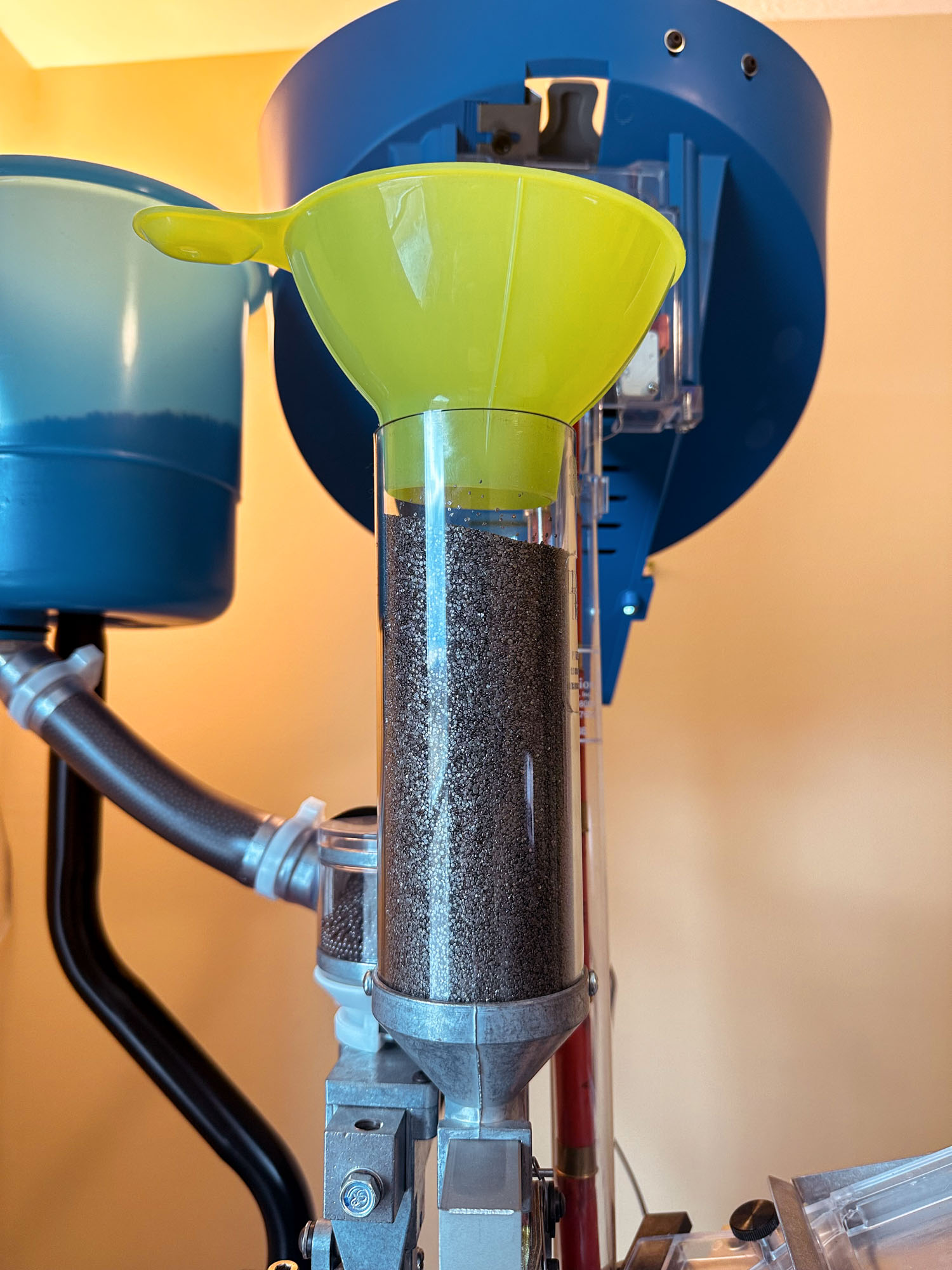
Installing the Powder Measure
The powder measure comes pre-assembled and attaches to the powder die. You will have to add a couple components to the measure, such as the powder measure plug and powder bar return rod, but if you read the directions carefully you’ll figure it out.
Don’t fill the powder measure at this time. You do that once the press is fully assembled.
Wad and Shot Stage Assembly
Station three is where the wad is seated and the shot dispensed. Like the powder stage, the shot dispenser is case activated. If there is no case present no shot is dispensed. This is a fantastic feature your shop vac will appreciate.
It’s time to raid your parts bag again. You’ll need to assemble the clear shot tube, the shot dispenser fittings, the two e-clips and the two tube clamps. With a little love and wiggling, this tube creates a twirly slide for your shot charge. To finish this process, install the shot bar return rod as instructed and tension accordingly.
The Finishing Touches
You’re on the home stretch! Attach the spent primer cup to its bracket under the machine’s platform. Place your blue Dillon bin (for completed fun seeds) off the right side of the machine. Hook up the finished shell ramp to the edge and, finally, attach the blue roller handle.
Tuning the Dillon SL900
You’ve bolted it down and put it together. Now the real fun begins. Shotshell loading shares some common ground with its metal-centric cousins, but there are some definite differences.
Since we’re loading 28-gauge shells everything is smaller, pickier, and possesses less wiggle room for error. The wads are slender with long petals that can get easily mis-aligned. While attention to detail is critical in all types of shotshell loading, it is especially important with sub gauges. Micro adjustments can have an outsized impact on how the shells come out.
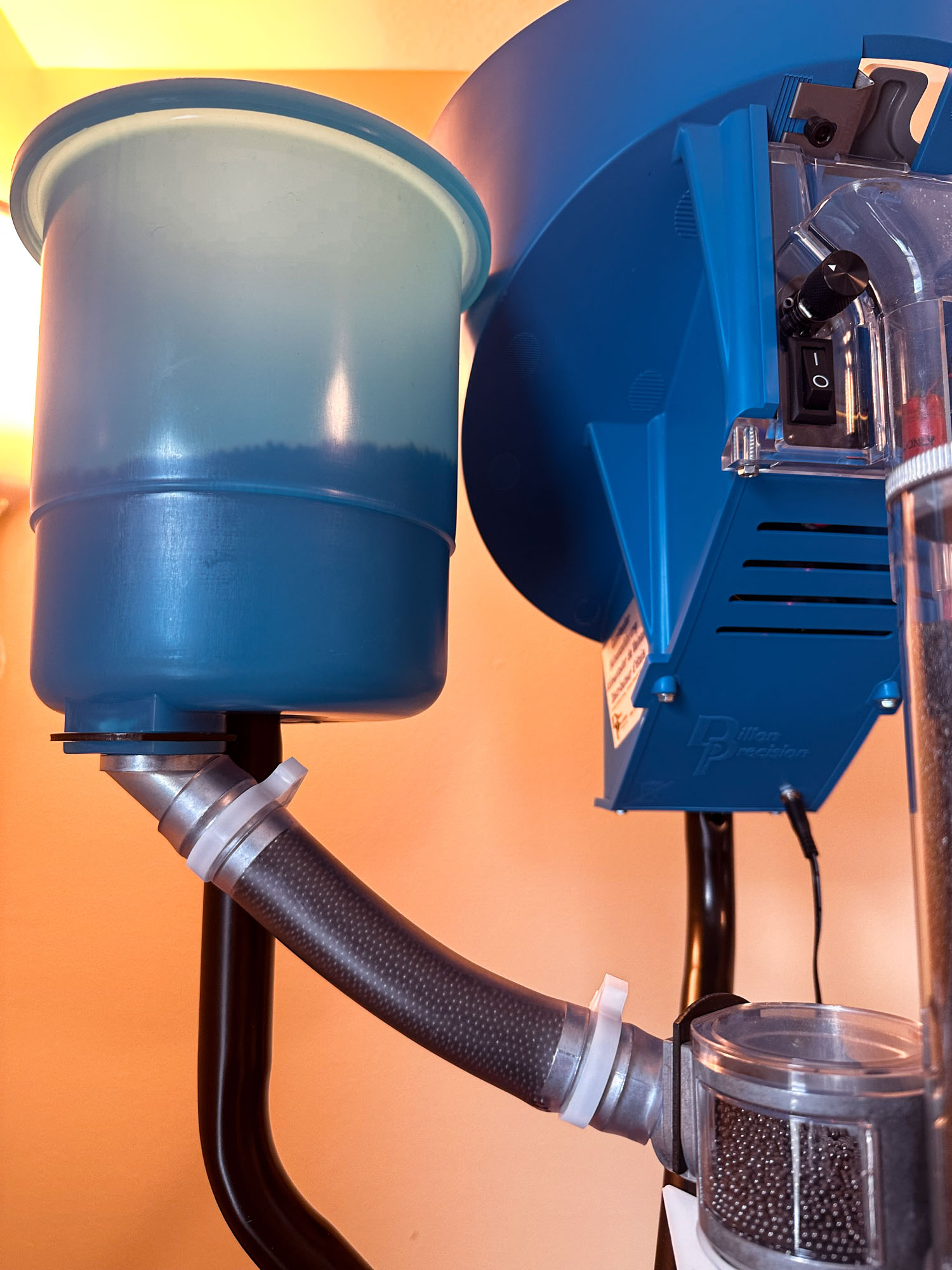
One of the key variables is component selection. Take powder selection for instance. Powder burn rate and volume are as critical in shotshell loading as when reloading rifle and pistol ammunition. Though instead of a solid projectile, shotgun shells have a premeasured quantity of shot. And, instead of neck tension and seating depth, shot shells have wad pressure and wad seating depth.
Settling on a Load
I had three types of hulls on hand, but knew that my final load was going to use Winchester AA HS red hulls. I recognized that I would waste a few hulls when tuning my powder charge, shot drop, and crimp settings, so I started with some green Remington STS hulls that were nearly toast and some Remington Nitro Gold hulls.
For powder, I went with Hodgdon Longshot. As with metallic loading, the key is to find a powder that takes up the correct volume and burns at the right rate to generate optimal pressure and velocity.
I used Winchester HS replacement wads and selected ¾ oz of No. 8 lead shot for the shot charge. For primers, I used Federal 209s.
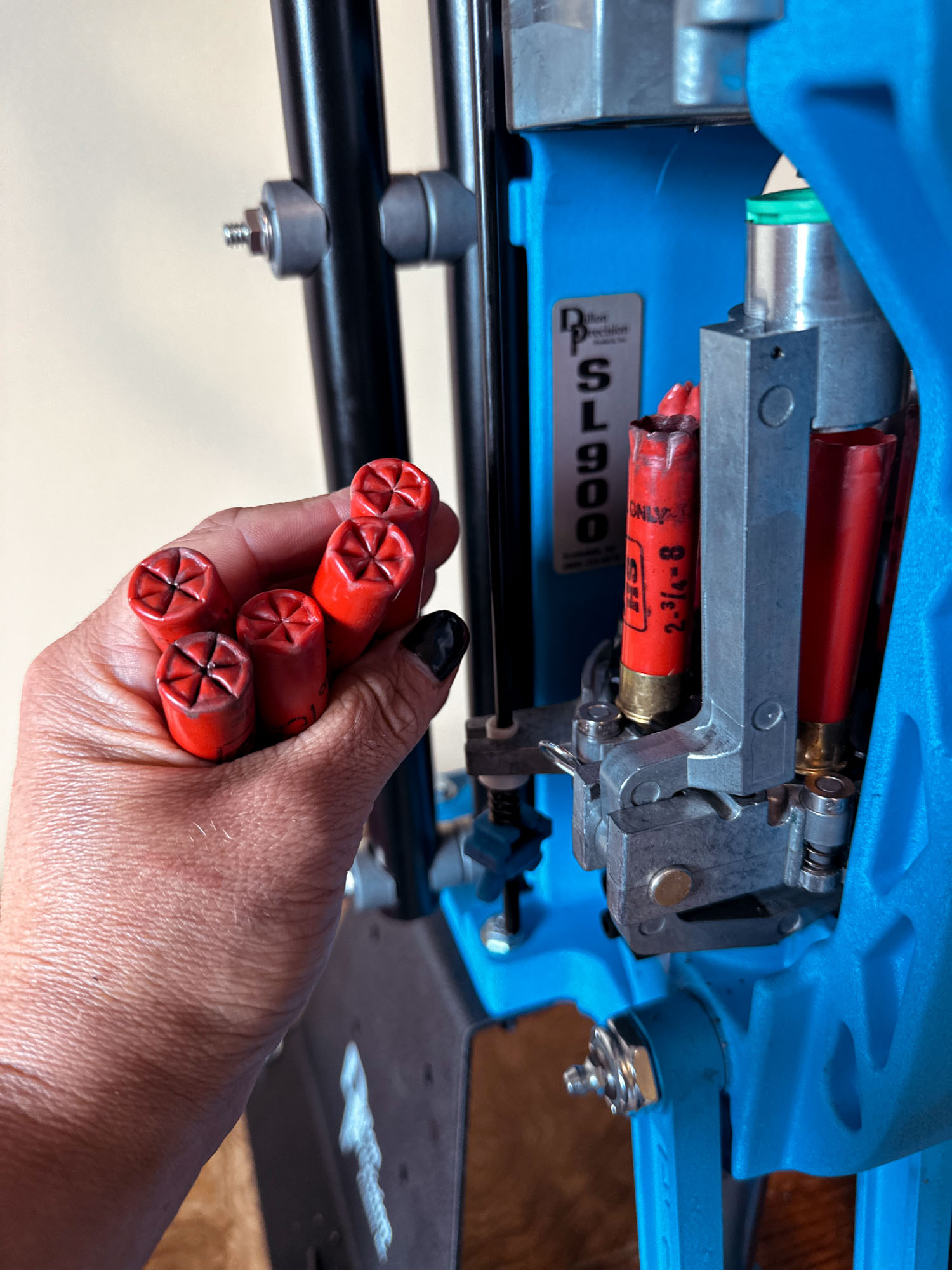
Running the Dillon SL900
Like a well-executed shot, a properly made shotshell takes a lot of pieces and processes working in harmony to achieve that beautiful, tightly crimped finished product. Let’s explore the stages of the Dillon SL900.
How Fast Does the Dillon SL900 Run?
Shotshell loading is, at the end of the day, a volume game. A day at the range can be a couple hundred shells, with an empty ammo box and a smile the only remnants of the day. With that in mind, how many shells can you load an hour on the Dillon SL900? My comfortable pace is about 400 shells per hour on the 28-gauge platform. I suspect that with 12s and 20s, which aren’t as persnickety, my hourly output would be higher.
Dillon SL900 Station One: Resizing and Decapping
The case feeder is an optional item on the Dillon SL900, but one I highly recommend. It automatically places a hull on the first stage of the press as you run the press’s handle.
As mentioned earlier, you have to set the speed of the case feeder correctly. Don’t turn it up too fast. If you do, empty shells may start flying over your head. Ask me how I know.
The sizing die on this stage re-sizes the hull’s brass and knocks the spent primer free, prepping the shell for the next station.
A Note on Running the Handle
When running the Dillon SL900, or any other progressive press, you want to pull the handle down smoothly until it reaches the the bottom of its range of motion and return it back in the same controlled manner.
The speed with which you run the handle determines how fast the shell plate rotates, so watch carefully. Go too briskly and you can have BBs flying out of your yet-to-be crimped shells.
At the end of the up stroke, it is important to push the handle firmly away from you to complete all the processes that the machine needs to execute.
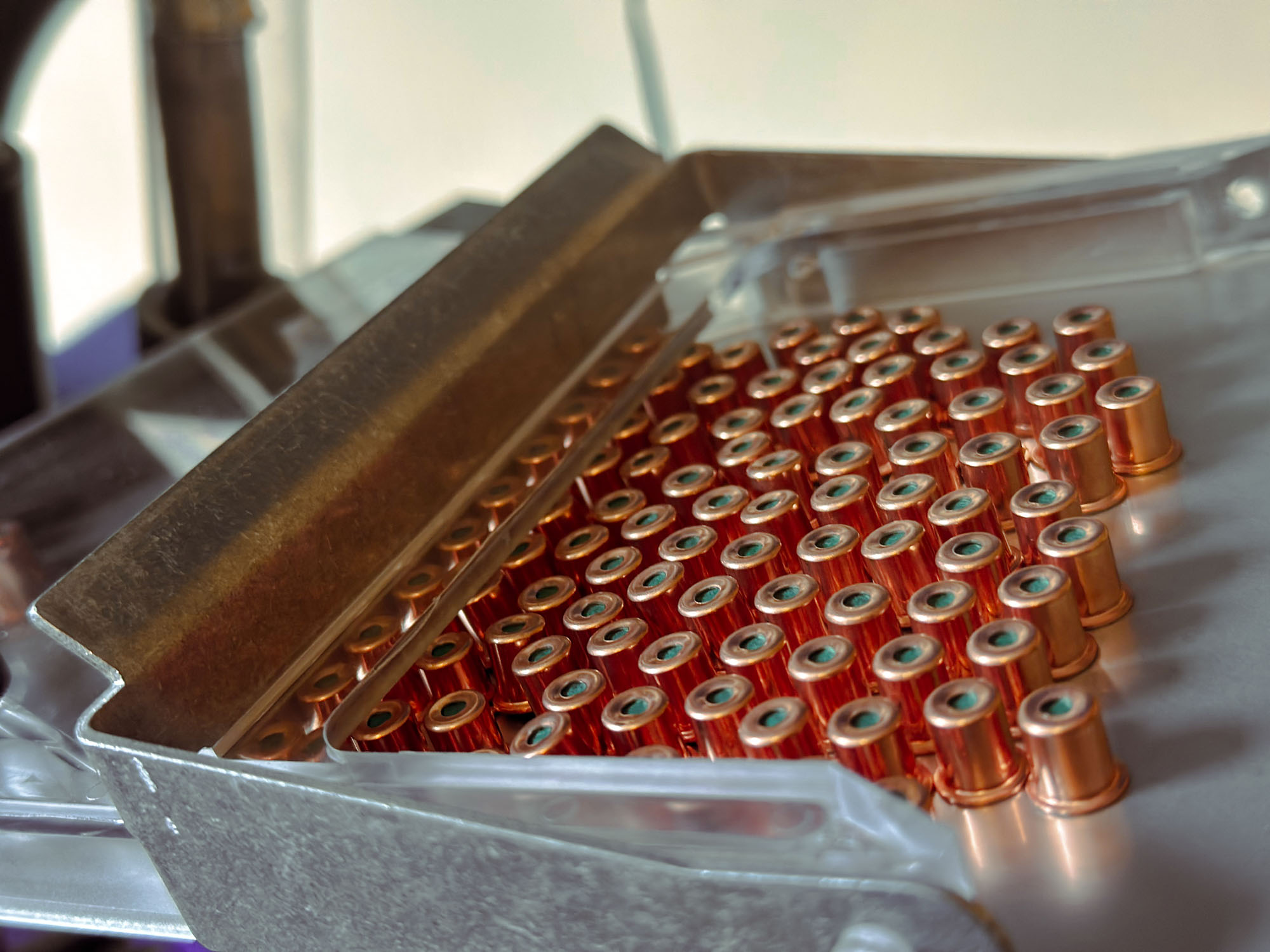
Dillon SL900 Station Two: Priming and Powder
During the downstroke of the handle, at the same time as a new hull is being deposited on the shell plate and resized, a primer is sent down the primer drop tube and whisked into the recess under the second stage on the shell plate. The firm forward push at the top of the handle cycle seats the newly deposited primer into the de-primed and resized hull. On my unit, the primer drop tube required no adjustment.
This is where things get interesting. Our pre-set powder charge gets dropped into our newly primed shell on the next downward pull. The primed and powdered hull is rotated into the Station Three slot on the corresponding upstroke. The powder charge is adjusted with simple clockwise or counterclockwise adjustments on the bolts of the powder measure bar, depending on if you want more or less deposited.
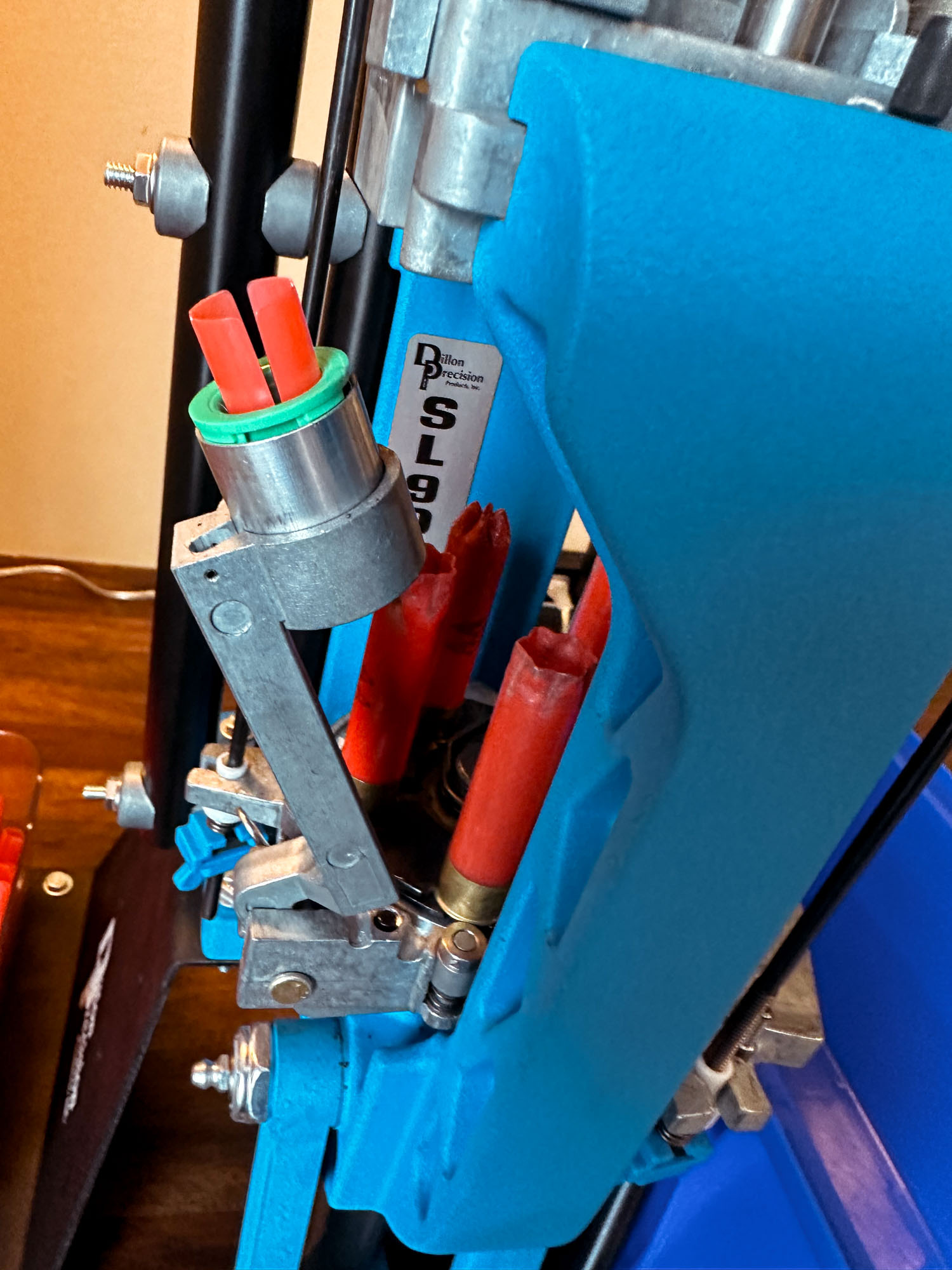
Dillon SL900 Station Three: Wad and Shot
On the SL900, the wad guide and swing arm assembly manage the placement of the wad. On the firm forward push of the handle at the top of the stroke, the wad swing arm tilts out, at which point the operator places a wad in the wad guide.
It sounds simple, but some finesse is required. If you push the wad down too hard on the spring-loaded sleeve it will get expelled through the bottom of the guide. If you go too soft and don’t seat the wad deep enough, the wad won’t clear the shot drop tube, thus making a mess. Have your shop vac close at hand until you get this one figured out.
After the wad is pressed into the primed and powdered hull the shot is deposited with a satisfying “swish” on the down stroke.
Dillon SL900 Stations Four and Five: Starter Crimp and Final Crimp
One thing I like about this machine is how easy it was to adjust the crimp in stations four and five, which you do with the included tools and standard sized wrenches. It makes working with different length hulls much easier.
Station four starts the crimp. Station five completes the crimp and deposits the now finished shell in the blue bucket on the side with a delightful “clunk.” If you hear something that sounds like a salt-shaker or a waterfall, you did something wrong and need to go back to the drawing board.
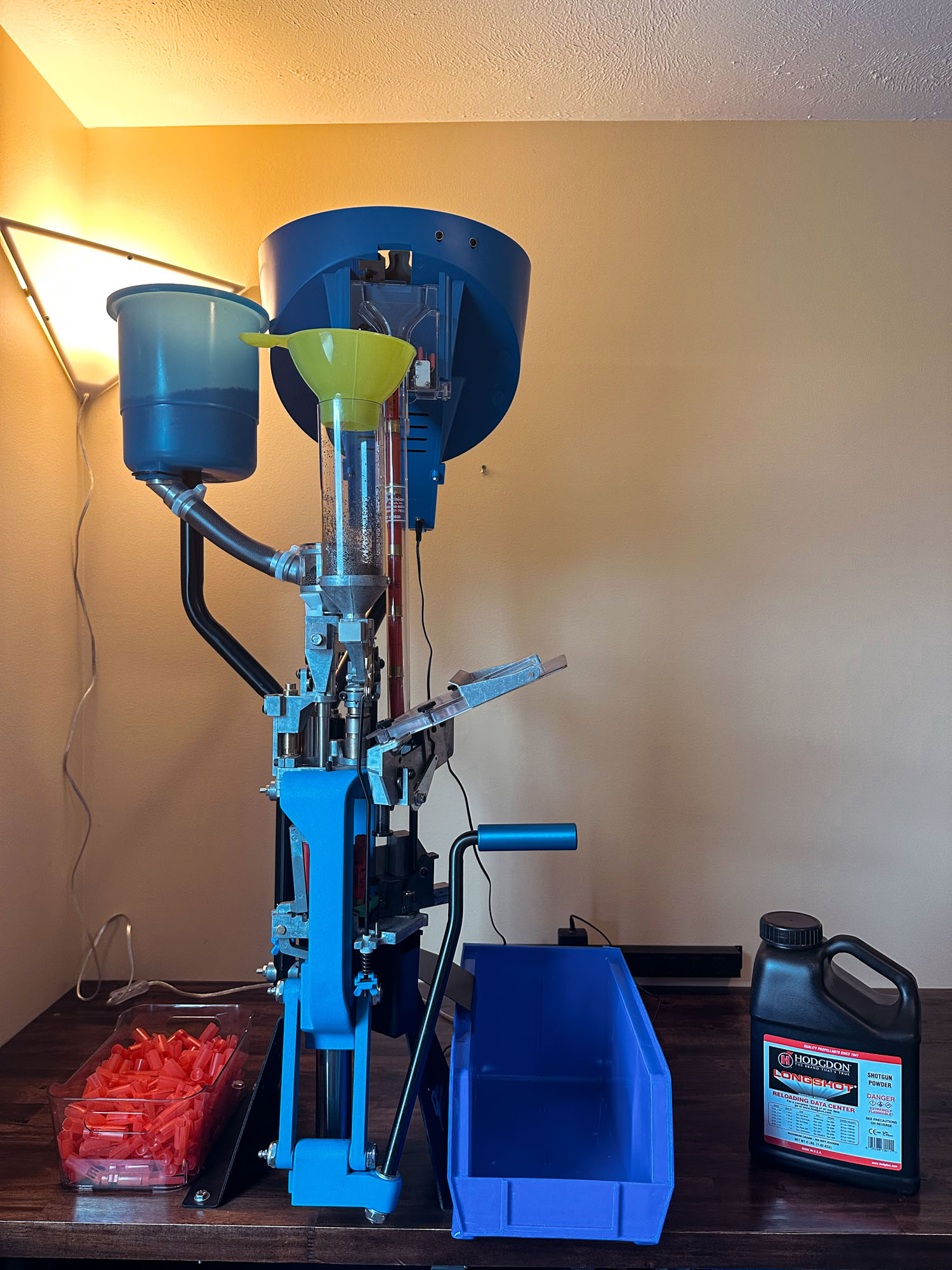
Dillon SL900 Pros and Cons
Pros:
- Well engineered
- Solidly built
- Efficient to operate
- Outstanding technical and parts support
- Great warranty
- Convertible between gauges, yielding a higher value long term for multi-gauge consumers
- Simple to assemble
- Runs beautifully once tuned
Cons:
- Challenging for a very non-mechanical, very unskilled person to tune without tech support.
- Costly initial investment
- Doesn’t load shot larger than No. 6s.
Final Thoughts on the Dillon SL900
The SL900 is made in 12-, 20-, and 28-gauge platforms with conversion kits available. In lieu of purchasing an entirely new loader to load a different gauge, the SL900 is designed to convert from one to another with minimal effort. I haven’t explored that facet at this time, so I can’t speak to it personally.
Let’s talk about what I’ve discovered so far. First off, the directions for assembly are fabulous. They are clear, concise, visually effective, and beautifully sequenced. Once the thing is put together and bolted up, it looks like a fancy espresso machine or an azule-hued still. (My nail girl actually waxed poetic about what a pretty color my new “coffee maker” was. Personally, I can’t imagine consuming enough caffeine to justify a bean grinder as large as the optional case feeder but, you know, different strokes…)
Dillon SL900 Learning Curve
Getting the SL900 making shootable shells was a more difficult proposition than putting the thing together. The instructions, while terrific, were geared toward the 12-gauge version, so all settings needed to be adjusted accordingly. Additionally, the instructions described Winchester AAs, but the test shell Dillon included was a Remington STS. These can differ in length, thus altering the crimp and taper settings.
Dillon’s Excellent Customer Support
While the courtship was a little rocky with the SL900 due to my lack of mechanical acumen, the moral and technical support were beyond exemplary. Enter, Gary Kieft. Gary is the voice, face, and loader-whisperer extraordinaire for Dillon Precision. Gary patiently responded to my barrage of emailed questions and phone calls with the professionalism and aplomb of a trained therapist.
Read Next: Best Shotguns of 2023
With that blue handle in hand, it is things like feeling the primer seat, watching the shell plate rotate cleanly, seeing the shot fill the waiting hull and observing the crimp for consistency.
There is art, science, and a little bit of magic when the pieces come together in harmony at the “pull”—whether shooting shotshells or reloading them. The Dillon SL900 encapsulates all three elements to make creating a pile of shells quickly a snap.
